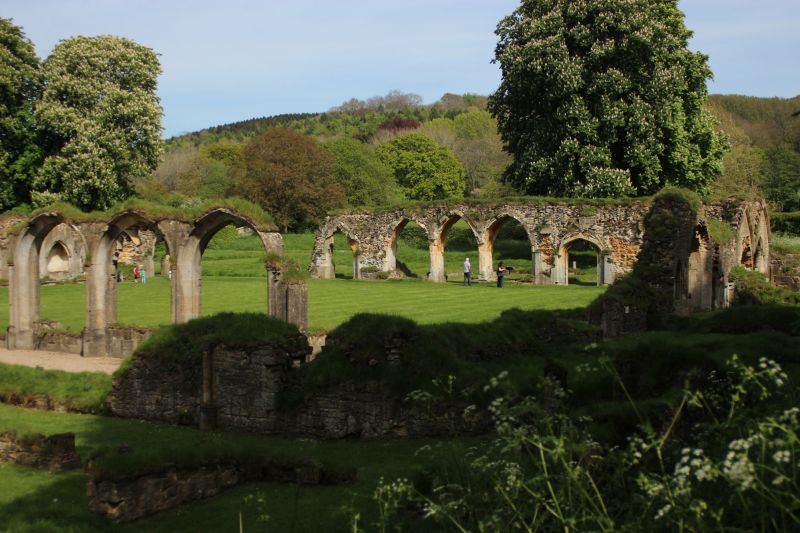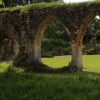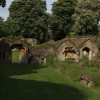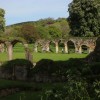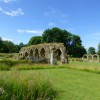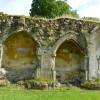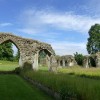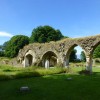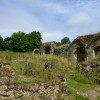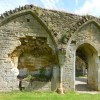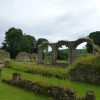Uploader's Comments
Inner Cloisters.
A brief history of Haile's Abbey
In October 1242, Richard, Earl of Cornwall, found himself in grave danger at sea. Terrified, he vowed to God that if he was saved from shipwreck, he would found a monastery. He did live, and he fulfilled his vow with the help of his brother King Henry III, who gave him some land at Hailes in 1245.
At the time, there was a small settlement at Hailes. The Cistercians, whose rules required them to live in isolation and silence, built their monasteries in remote, desolate areas. But in this case the royal gift of land did not allow the monks choice of location, and so to accomadate the monks orders the settlement of Hailes was removed. The villagers were relocated to Didbrook a few miles to the north.
The Cistercians now had the isolation they required, and they began to build a monastery in 1246. The founding monks (20 of them plus 10 lay brothers) came from the Abbey of Beaulieu in Hampshire. Within five and a half years, enough of the abbey was completed to be dedicated. The dedication ceremony was held on November 5, 1251, in the presence of King Henry III,his brother Richard who founded the abbey and a number of other high profiles.
The history of Hailes Abbey came to an end with the Reformation and the Dissolution of the Monasteries. First, in 1538, King Henry VIII ordered that all Catholic shrines be demolished.
The last Abbot of Hailes was Stephen Sagar, who came from the Abbey of Whalley in Lacashire and appears to have been friends with Thomas Cromwell. On Christmas Eve 1539, Abbot Sagar and his 21 monks surrendered Hailes Abbey to King Henry's commissioners. The abbey was found to be worth £357, making it the 12th richest of the 75 Cistercian abbeys in the country.
In 1542, the king sold Hailes Abbey to Richard Andrews, a dealer in former monastic property, and the great abbey church was destroyed shortly thereafter. The west range, barn and other useful buildings were preserved and later used as private housing for noble families.
By the end of the 18th century the site had suffered extensive destruction and it was left in an overgrown and decaying state until its excavation in the late 1800s.
The remains of Hailes Abbey are not extensive. None of the abbey church survives.
track road, but a taxi from Cheltenham or Winchcombe may be possible.
Inner Cloister.
A grassy patch where the great abbey church used to be, looking east to the altar and ambulatory from the... © Holly Hayes
Artist's impression of the east end of the church looking west, with the Shrine of the Holy Blood in the... © Holly Hayes
View across the cloister to the east range. © Holly Hayes
Three surviving arches on the west side of the cloister. © Holly Hayes
Uploaded by Karen Lee on 29 June 2014
